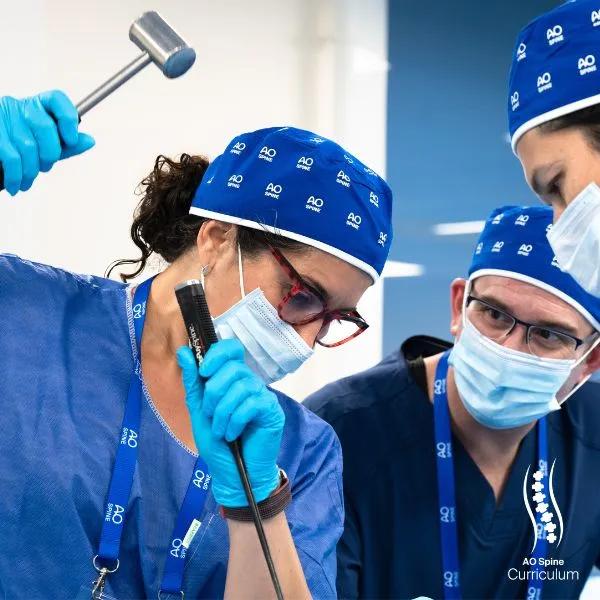Posterior C1–C3 fusion
1. Introduction
C1–C3 stabilization can be combined with fusion.
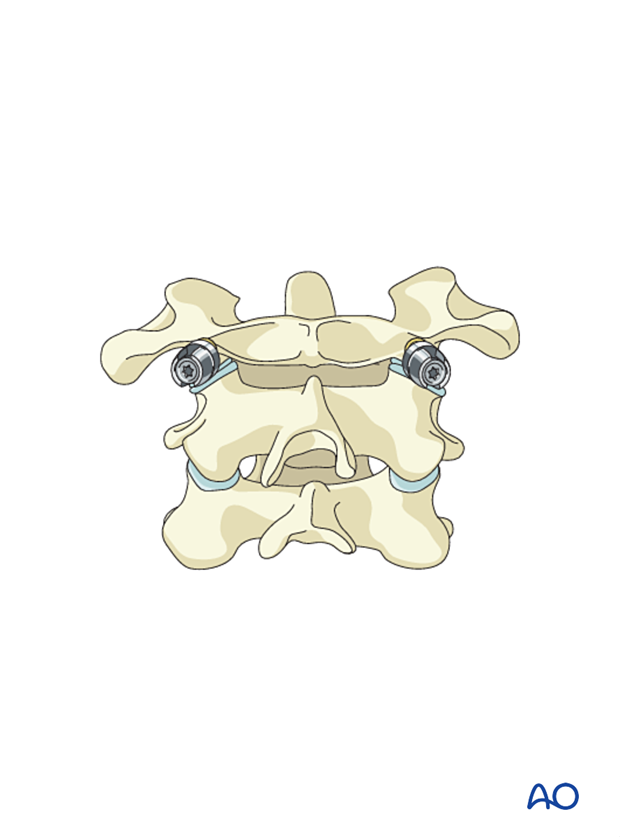
Reduction
Prior to the surgical access the fracture may be reduced anatomically.
Reduction can be performed:
- preoperatively using halo traction
- intraoperatively using a Mayfield clamp or a similar tool
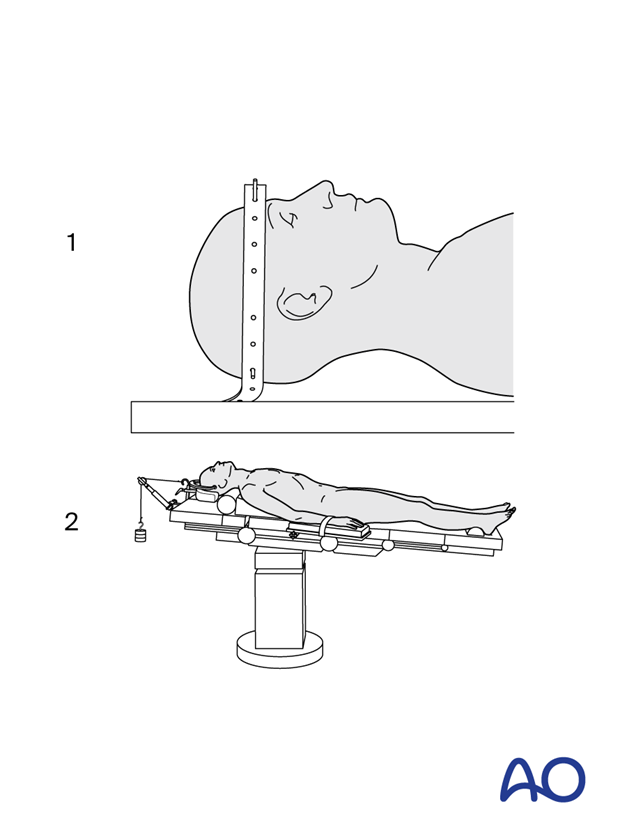
Approach
The location of the skin incision needs to be determined prior to draping the patient for insertion of transarticular screws. This is done by placing a long K-wire along the side of the neck in the intended direction of the screw and viewing it on the image intensifier.
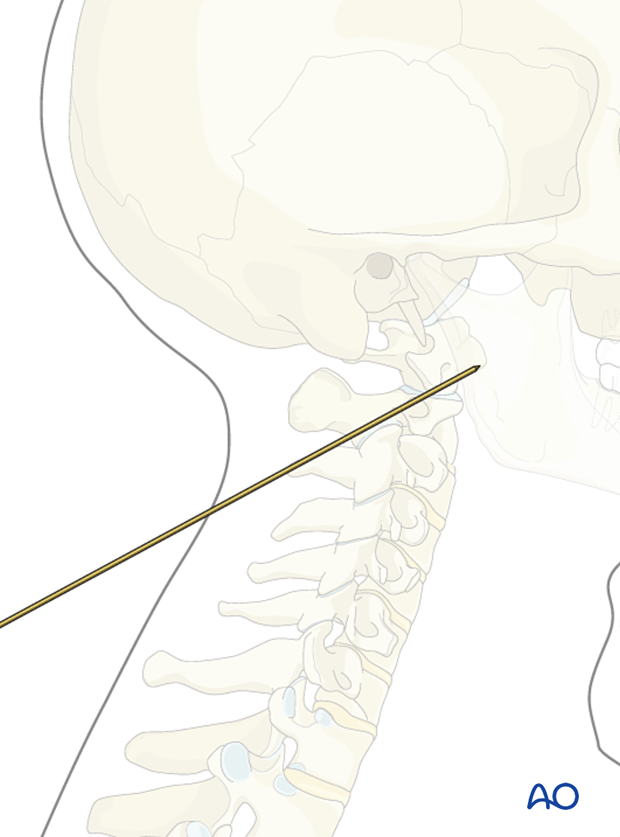
2. Approach and positioning
This procedure is performed through a posterior approach with the patient placed in the prone position.
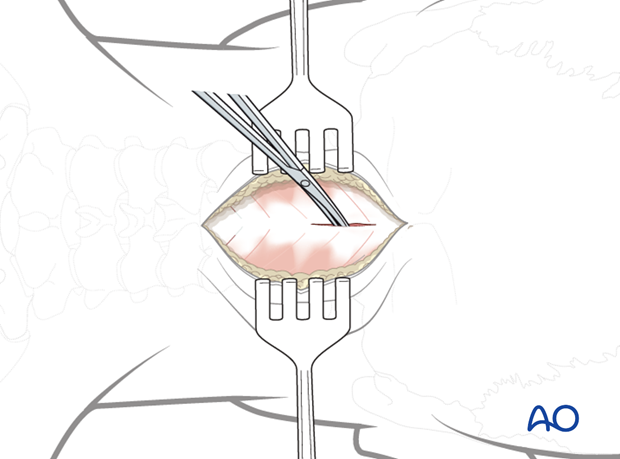
3. Posterior internal fixation
C1 Screw placement
C1 can be fixed using lateral mass screws that start either just caudal to the posterior arch or that start on top of the posterior arch and then capture the lateral mass. The latter can only be used if the posterior arch is thick enough to allow for the screw.
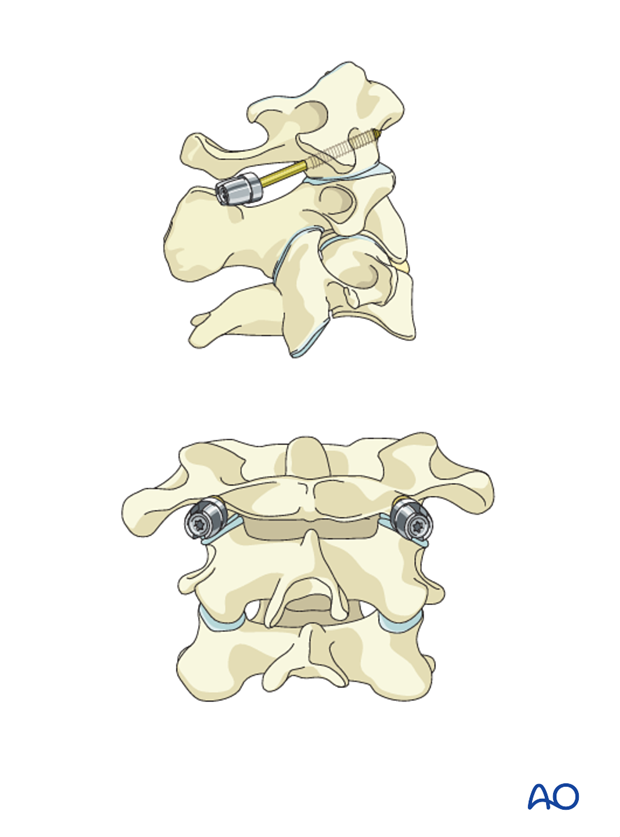
C2 screw placement
C2 can be fixed using one of these three techniques:
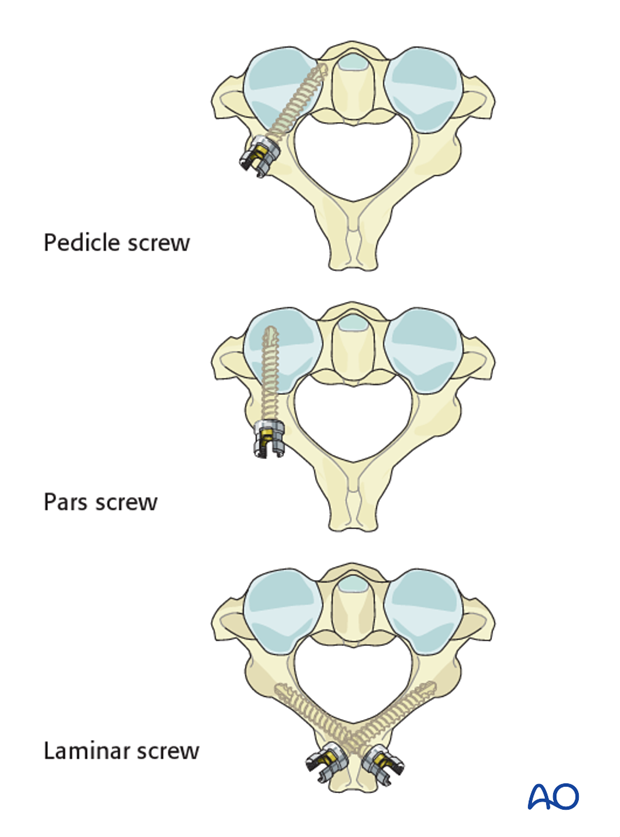
Be aware that some posterior arches have a ponticulus posticus that appears to be a thick posterior arch, but is, in fact, a small bridge of bone that overlies the vertebral artery.
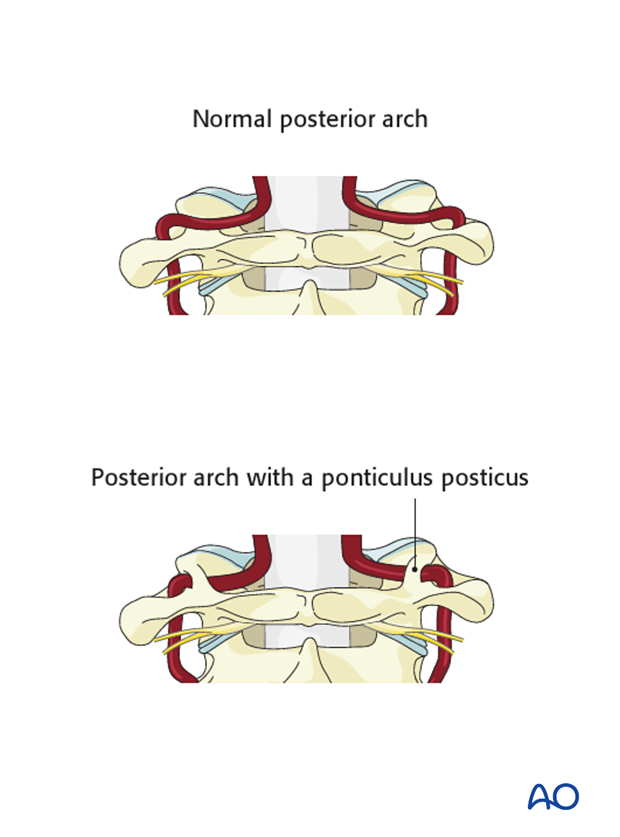
C3 screw placement
C3 can be fixed using lateral mass screws or pedicle screws.
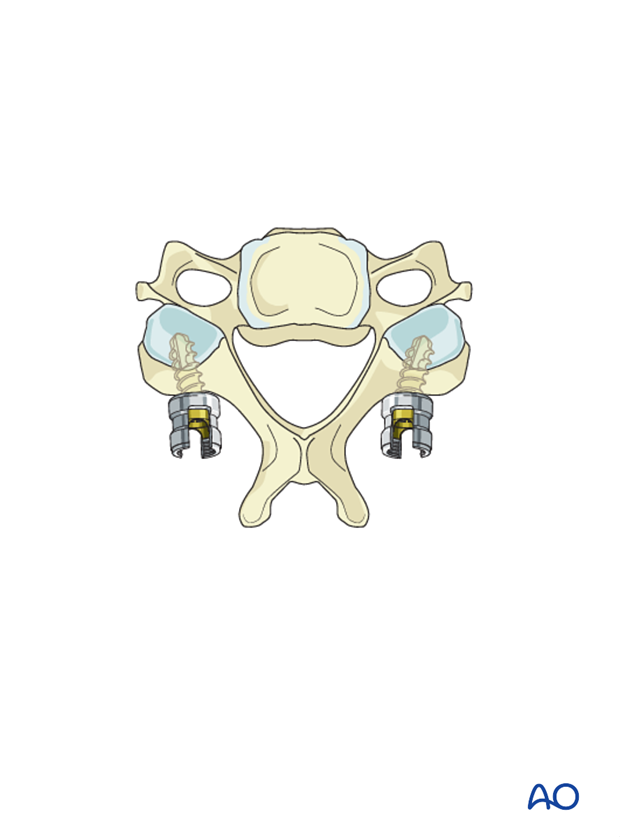
4. Posterior fusion
Fusion following C2–C3 stabilization
Keep the rods as short as possible. The rods are placed between C1, C2, and C3 screws.
The lamina and facets are decorticated, and bone graft is placed if needed.
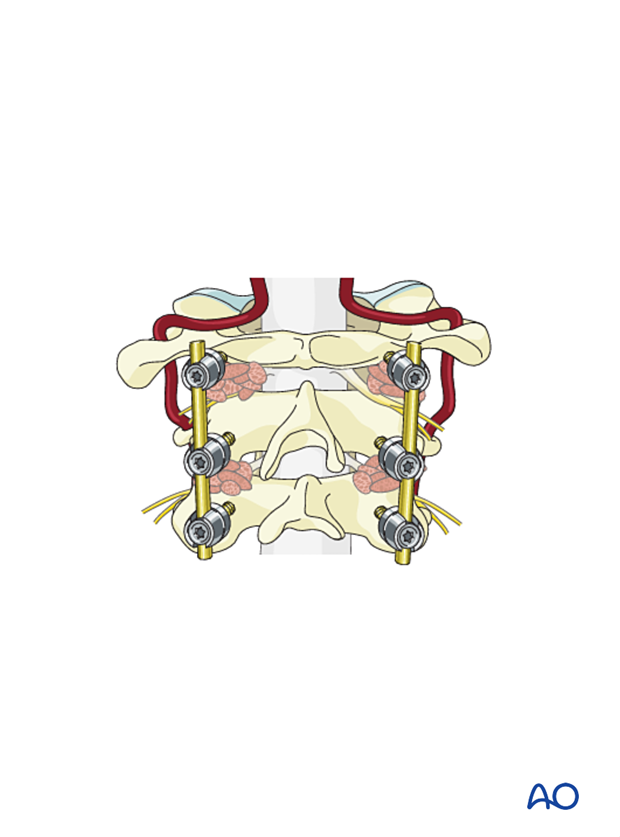
5. Aftercare
Patients are made to sit up in the bed on the evening following the operation.
A collar is commonly used following surgical stabilization to moderate patient activity.
The purpose of a collar is to prevent ranges of motion outside of limits deemed favorable for fracture healing. A collar is optional.
Patients with intact neurological status are made to stand and walk on the first day after surgery. Patients can be discharged when medically stable or sent to a rehabilitation center if further care is necessary. This depends on the comfort levels and presence of other associated injuries.
Patients are generally followed with periodical x-rays at 6 weeks, 3 months, 6 months, and 1 year.
